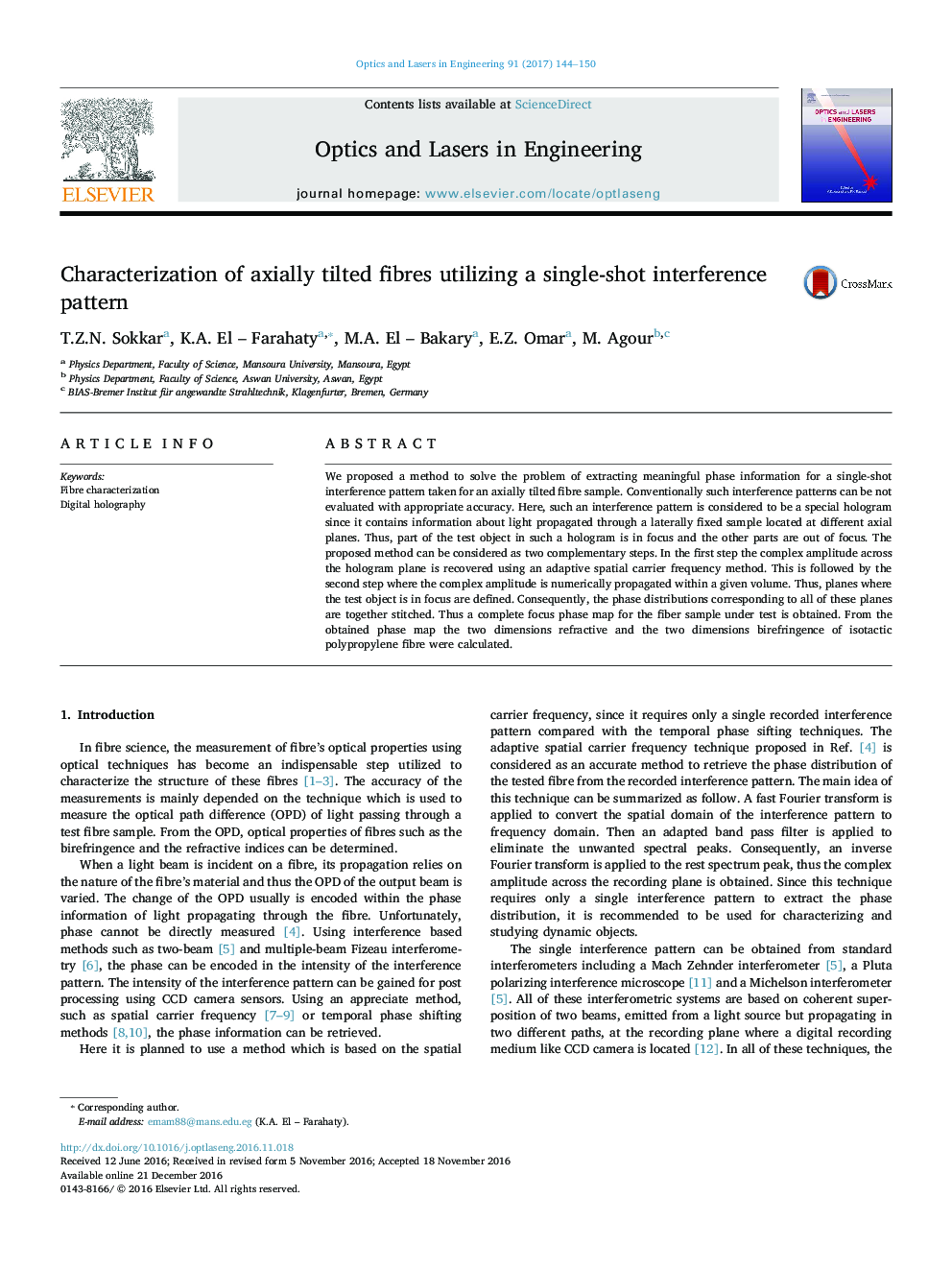| Article ID | Journal | Published Year | Pages | File Type |
|---|---|---|---|---|
| 5007878 | Optics and Lasers in Engineering | 2017 | 7 Pages |
â¢A method to extract optical properties of an axially tilted fibre is proposed.â¢The method requires only a single hologram.â¢The complex amplitude is recovered using an adaptive spatial phase shifting approach.â¢Numerical propagation is used to recover the phase for all focus parts of the fibre.â¢Refractive indices and birefringence of isotactic polypropylene fibre were obtained.
We proposed a method to solve the problem of extracting meaningful phase information for a single-shot interference pattern taken for an axially tilted fibre sample. Conventionally such interference patterns can be not evaluated with appropriate accuracy. Here, such an interference pattern is considered to be a special hologram since it contains information about light propagated through a laterally fixed sample located at different axial planes. Thus, part of the test object in such a hologram is in focus and the other parts are out of focus. The proposed method can be considered as two complementary steps. In the first step the complex amplitude across the hologram plane is recovered using an adaptive spatial carrier frequency method. This is followed by the second step where the complex amplitude is numerically propagated within a given volume. Thus, planes where the test object is in focus are defined. Consequently, the phase distributions corresponding to all of these planes are together stitched. Thus a complete focus phase map for the fiber sample under test is obtained. From the obtained phase map the two dimensions refractive and the two dimensions birefringence of isotactic polypropylene fibre were calculated.
